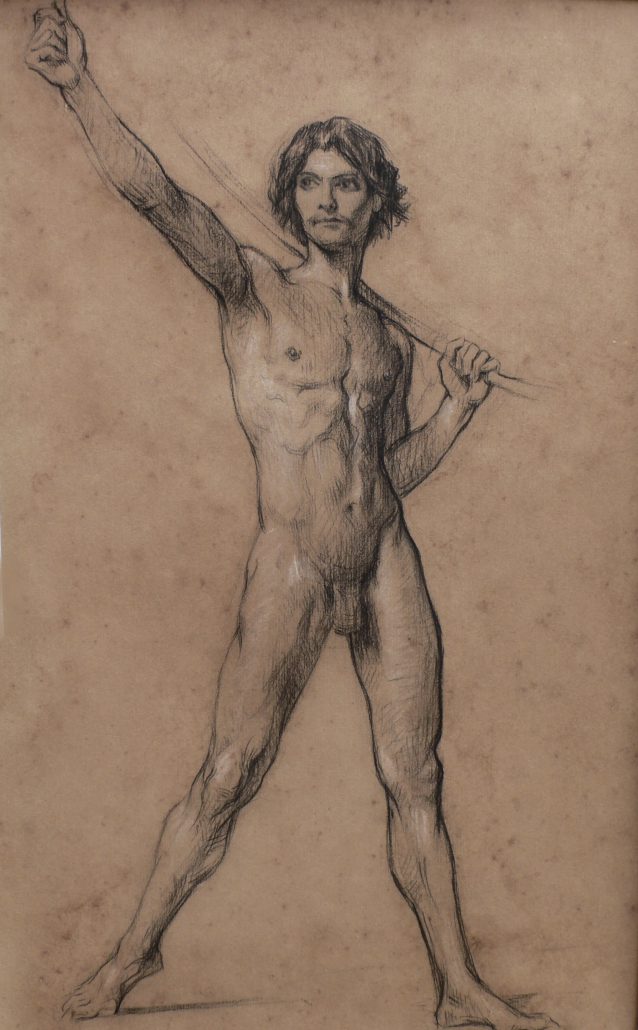Jules-Elie Delaunay
1828-1891
French School
Study for David Triomphant (David, Triumphant), circa 1874
Black Chalk, white chalk, and graphite on medium weight tan wove paper
No Watermark. 14 7/8” x 9 7/8” (37.8×25.6cm)
The present drawing is a preparatory study figure of David in the painting The Triumph of David, one of the artist’s most famous works. It was exhibited in 1874 at the Salon in Paris and at the Salon in Nantes. The painting was noted for the artist’s color palette, which was light and colourful. Some art historians point out the paradox, in an era where French artists such as Bonnat, Courbet and Ribot were influenced by the Spanish School of Ribera and Murillo, of Delaunay’s depiction of grim subject matter with jolly tonalities. They attribute this to an influence of the Impressionists (Delaunay’s close friend, Madame Toulmouche was a cousin of Claude Monet) or the paintings of the Italian Renaissance. It is true that the insolence and determination of David, conveyed very well in the preparatory drawing, cuts through the Leonardesque sfumato of Delaunay’s background, which is surprisingly geometric for 1874. All questions of color palette aside, the admirable power and beauty of Delaunay’s masterful draughtsmanhip is fully evident in this work, a masterpiece of the nineteenth century French School.
Today, David Triumphant is one of the most prominent paintings from the substantial collection of Delaunay’s works in the Museum of Fine Arts in Nantes, the artist’s native city. The museum also posesses a variant of the present drawing, executed on papier calque and measuring 37.4 x 24.2cm. The corresponding dimensions and the similarity of the two images suggest that the sketch of Nantes was traced from the present work.

